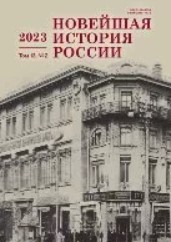Всесоюзная перепись жилищного фонда СССР 1960 г. : организация и итоги
All-Union Housing Census of the USSR in 1960: Organization and Results
Author(s): S. A. Bakanov, V. E. KhlyzovSubject(s): Government/Political systems, Welfare systems, Post-War period (1950 - 1989), History of Communism
Published by: Издательство Исторического факультета СПбГУ
Keywords: housing issue; USSR; housing policy; housing; mass housing construction; Khrushchev;
Summary/Abstract: The article examines the organizational forms of housing accounting in the USSR and analyzes the results of the census and accounting of the housing stock of the USSR as of January 1, 1960. The article presents the criteria by which the Soviet leadership attributed a specific structure to a certain category of housing and also took into account the degree of its convenience and amenities. Throughout the USSR, the census registered 12.2 million residential buildings with a living area of 659.1 million m2, in which 109.1 million people were settled. In rural areas, the housing stock, being the personal property of citizens, was outside the census. The article provides data on the number of floors of residential buildings, the materials of the walls, describes the qualitative characteristics of housing and the provision of certain types of conveniences — sewerage, central heating, water supply, gas. The authors also consider the issue of providing Soviet citizens with living space. They come to the conclusion that the average space of 5.9 m2 per person is a rather approximate estimate since the standards for the provision of living space were set by local councils depending on the complexity of the housing situation in a particular city or district. These standards were necessary for the authorities to regulate housing queues. The census’s figures reflected the appearance of the majority of Soviet cities, which by 1960 remained (with the exception of capitals and some large cities) mostly wooden and one-storey, with small inclusions of stone blocks built at the beginning of the twentieth century and the period of industrialization as well as panel new buildings of the second half of the 1950s.
Journal: Новейшая история России
- Issue Year: 13/2023
- Issue No: 43
- Page Range: 482-499
- Page Count: 18
- Language: Russian

